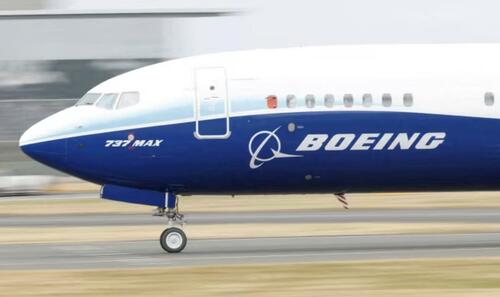The Boeing Dilemma
By Peter Van Doren and Dennis L. Weisman, Cato Institute
Boeing has been in the news a lot lately, for all the wrong reasons. The iconic aviation company has been struggling through a series of high-profile quality-control problems, including a door coming off an Alaska Airlines jet while in flight (fortunately, with only minor injuries), cracked windshields, wheels falling off landing gear, engine fires, and possible flaws in the design of the pilot’s seat. These come only a few years removed from the ill-fated launch of Boeing’s next-generation 737 Max8 aircraft, which suffered two fatal crashes over a five-month period and resulted in the plane being grounded for almost two years. It’s worth noting that rival Airbus has experienced some of the same issues (Chung 2024), but Boeing is under a very dark cloud.
The firm’s problems, even if they are found not to be systemic, have only contributed to the public’s already heightened anxiety over flying, stoked by several highly publicized near misses at the nation’s airports in recent years and a severe shortage of qualified traffic controllers. Worry is especially high for Boeing aircraft: databases report a record number of travelers are changing their itineraries to avoid the planes. Some flyers reportedly are turning to anti-anxiety drugs and prayer to calm their fears, while others are refusing to fly altogether (Sorace, 2024).
Boeing announced in March that its CEO, David Calhoun, will be leaving the company. This comes on the heels of other high-level management changes. The company’s stock price is down dramatically, recently hitting a five-month low, and the CEOs of several major airlines have requested to meet directly with Boeing’s board. Airbus now commands nearly a 62 percent market share for narrow-body jets (Wiltermuth, 2024). There is little prospect of Boeing making significant inroads against Airbus in the short run as airlines value a homogenous jet fleet because it economizes on training. In the aftermath of the Alaska Airlines incident, the U.S. Justice Department initiated a criminal probe of Boeing and Federal Aviation Administration (FAA) audits at the company’s factories have turned up scores of problems with the 737 aircraft.
A serious concern is that these quality-control problems will lead more travelers to abandon the skies for the nation’s highways. Driving is far more dangerous than flying, and a shift from air to roadway travel means more fatalities and injuries. This creates a bitter dilemma for regulators: If the public does not believe the agency is “cracking down” appropriately on Boeing, more of them will substitute auto travel for air travel. But if the FAA cracks down heavily on Boeing, new quality control efforts will raise the jet maker’s costs and its planes’ prices, which will translate to higher airfares and, in turn, more travelers substituting auto travel for air travel. The public policy question is what course of action would minimize the risk of public harm?
The Fateful Substitution of
Automobile Travel for Air Travel
Increasing the price of air travel or decreasing its safety (real or perceived) would be expected to decrease demand for air travel and increase demand for automobile travel. This substitution is problematic because automobile travel is 100 times more dangerous than air travel in terms of fatalities per mile traveled. (See “The Risk of Too Much Air Safety Regulation,” Spring 2020.) This type of cost–benefit calculus previously led regulators to decide against mandating child safety seats on commercial aircraft because the mandate could double the price to fly for a family of four (Sanders, Weisman, and Li 2008). As we wrote elsewhere: “The risk of injury in driving is almost 24,000 times greater than that of flying on a per-mile basis. The roads are dangerous and deadly—the skies are markedly less so” (Van Doren and Weisman 2020). It is likely that Boeing’s recent quality-control problems and the Alaska Airlines incident, in particular—which to date have resulted in zero fatalities in the air—have nonetheless resulted in an increased number of fatalities and injuries on the ground as automobile travel displaces air travel.
To better understand the policy tradeoffs, suppose that the safety-adjusted price of airfare can be represented by p = p―s where p is the nominal price of airfare and s is a measure of perceived airline safety. If s decreases and p is unchanged, then p increases, causing a substitution of...(READ THIS FULL ARTICLE FREE HERE).
NEVER MISS THE NEWS THAT MATTERS MOST
ZEROHEDGE DIRECTLY TO YOUR INBOX
Receive a daily recap featuring a curated list of must-read stories.




